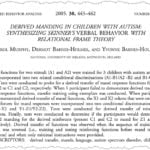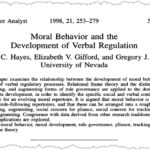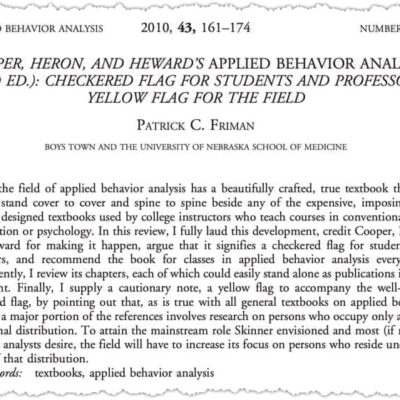On-demand CEUs for BCBAs focused on derived stimulus relations and stimulus equivalence
List Grid
Topic
1 Format
Number of CEUs
Type of CEU
Sort by Popularity
Saved products
Showing 1 – 3 of 3 results Showing all 3 results Showing the single result No results found
Filters Sort results
Reset Apply
(503) An award-winning, interactive, multimedia tutorial that will help you master the key concepts, terms, and approach of Relational Frame Theory (RFT), a behavior-analytic account of human language and cognition. RFT… Show more (+) An award-winning, interactive, multimedia tutorial that will help you master the key concepts, terms, and approach of Relational Frame Theory (RFT), a behavior-analytic account of human language and cognition. RFT provides a framework for an analysis of complex human behavior that serves as the basis of promising new interventions in applied behavior analysis or ABA (e.g., PEAK Relational Training System) and clinical psychology (e.g., Acceptance and Commitment Therapy). Show less (-) BCBA CEUs: 7 | ||
Derived Manding in Children with Autism: Synthesizing Skinner’s Verbal Behavior with Relational Frame Theory Carol Murphy, Dermot Barnes-Holmes, & Yvonne Barnes-Holmes (16) Read the following article and pass a 6-question quiz on it:
Murphy, C., Barnes-Holmes, D., & Barnes-Holmes, Y. (2005). Derived manding in children with autism: Synthesizing Skinner’s Verbal Behavior with relational frame theory. Journal… Show more (+) Read the following article and pass a 6-question quiz on it:
Murphy, C., Barnes-Holmes, D., & Barnes-Holmes, Y. (2005). Derived manding in children with autism: Synthesizing Skinner’s Verbal Behavior with relational frame theory. Journal of Applied Behavior Analysis, 38(4), 445-462.
Show less (-) BCBA CEUs: 1 | ||
Moral Behavior and the Development of Verbal Regulation Steven C. Hayes, Elizabeth V. Gifford, & Gregory J. Hayes (20) Read the following article and pass a 13-question quiz on it:
Hayes, S. C., Gifford, E. V., & Hayes, G. J. (1998). Moral behavior and the development of verbal regulation. The… Show more (+) Read the following article and pass a 13-question quiz on it:
Hayes, S. C., Gifford, E. V., & Hayes, G. J. (1998). Moral behavior and the development of verbal regulation. The Behavior Analyst, 21(2), 253-279.
Show less (-) BCBA CEUs: 2.5 2.5 |





